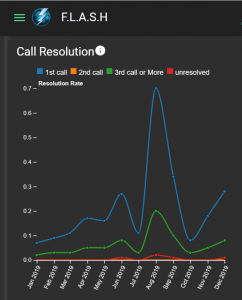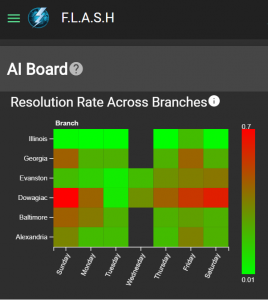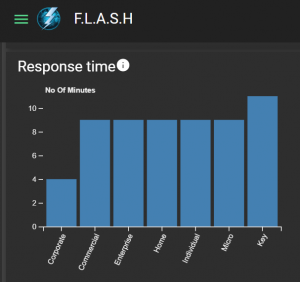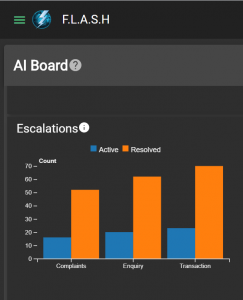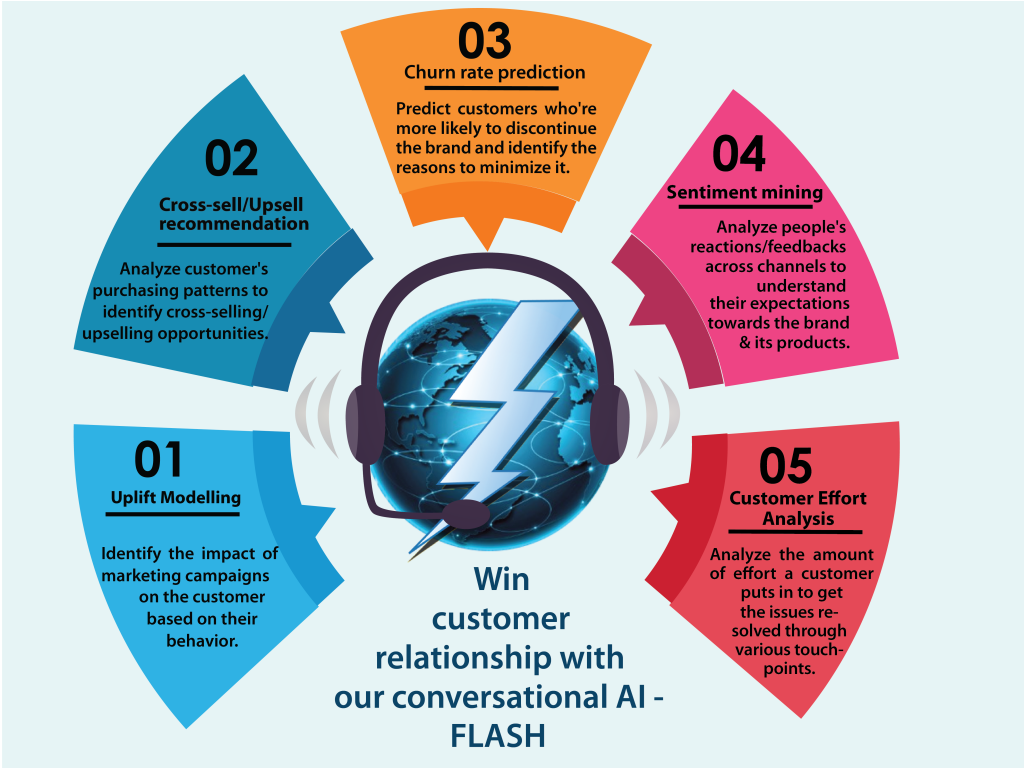
BPO – Analytics: A prerequisite for operational efficiency:
The contact center has extensive information about customers, their behavioral and non-behavioral data, product experience, and the interactions with the frontline staff. With appropriate analytics, the information could be modeled to predict very useful characteristics to promote the product, up-sell/cross-sell, predict the intent of the customer call, etc.
BPO sector sets forth the following expectations which can be achieved through Advanced Analytics:
- The historical and current data needs to be analyzed to uncover the masked opportunities for the strengthening of the organization.
- The potential customers have to be identified, segmented, and targeted for the marketing campaign.
- The unstructured data from the customer complaints have to be extracted and analyzed further to enhance customer service strategies.
- The data from social media requires to be mined to determine emotions and opinions about brands, products, and services.
- The customers who are likely to cease the service from the business need to be predicted.
- The intent of the customer has to be predicted to give what exactly the customer wants before they ask for it.
- There is a need for prediction of the future using extensive evaluation of the past performance
- Recurrent issues of a product should be categorized for future enhancements.
- The best products to be recommended to customers are to be predicted so that they can easily find their desired product.
- The total value a customer can bring to a company throughout their lifetime is to be measured.
Analytical Solutions for Contact Centers:
geniSIGHTS understands the pressing needs of Business Process Outsourcing companies and has come up with a handful of analytical solutions. These intelligence solutions yield valuable insights to organizations ensuring the highest level of customer satisfaction.
Some of the analytical solutions offered are:
Uplift Modelling
The Uplift Modelling ensures that the customers who have higher propensity scores are rightly identified and targeted for the marketing campaigns. The customers are segmented into four categories based on their behavior after being encountered with a marketing action.
- Sure Things – Customers who would have responded whether they were targeted or not.
- Lost Causes – Customers who will not respond irrespective of whether or not they are Targeted.
- Sleeping dogs – Customers who are less likely to respond because they were targeted.
- Persuadables – Customers who only respond to the marketing action because they were Targeted.
Cross-sell/Upsell recommendation
The cross-sell recommendation suggests the customers for the complementary product when they purchase a new product. The upsell recommendation shows up the customers with a better version of the product that they plan to buy. This system uses affinity analysis/association rules mining to analyze the co-occurrence of relationships among activities performed by customers and discover the cross-sell/up-sell opportunities accordingly.
Recommendations Systems
The recommendation system exceptionally helps the business to predict the most likely product that the customer will buy. This system can therefore provide more personalized offers for the items of the customer’s interest.
Predicting customer churn rate
Customer Churn analysis predicts the customers who are likely to cancel their subscription from the company. The analysis also helps to understand why the customers are leaving and the possible ways to reduce the churn.
Sentiment mining
Sentiment mining extracts the necessary information from social media to understand what people think about a product or how they look up to a brand. The emotional tone behind each mention in social media can be derived from this analysis.
Customer Effort Analysis
The customer effort analysis brings out the amount of effort a customer puts in getting his issues resolved through various touchpoints.
These are some of the advanced analytical solutions that the conversational AI could offer for the problems faced by contact centers. Wait for edition 3 to find out how Conversational AI resolves all the problems of contact centers in real-time.
Are you a contact center organization looking for real-time & customized analytics solutions for your business?
We have a product explicitly designed to cater to your analytical needs. Get in touch with us at info@genisights.com or contact@flash.genisights.com to schedule an appointment today!
You can likewise visit our website https://flash.genisights.com/ to know more about our product.
Learn how Advanced Analytics aids the contact centers to enhance the customer experience thereby converting contact centers to revenue centers. Our Conversational AI product FLASH comes handy providing meaningful insights in just a matter of seconds.
Conversational AI-led analytics is indeed the game-changer for contact centers is a 3 part blog. Part 1 concentrated on the problems faced by the contact centers which is now followed by the solutions conversational AI could offer in part 2 and how the conversational AI solves the problems in real-time will be in part 3 of the blog.



